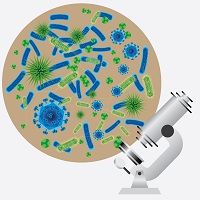Article
Fecal Matter Transplants Conducted Between Healthy to Pediatric Ulcerative Colitis Patients
Author(s):
During a fecal matter transfer (FMT), non-pathogenic viruses were transferred from a healthy patient to three pediatric ulcerative colitis (UC) patients, according to findings published in mBio.

During a fecal matter transfer (FMT), non-pathogenic viruses were transferred from a healthy patient to three pediatric ulcerative colitis (UC) patients, according to findings published in mBio.
Researchers from Texas and Pennsylvania gave three pediatric UC patients between 22 and 30 FMT treatments, considered an intense regimen, to study process and effects. The researchers purified viral particles from the donor and the recipient stool samples before administering them to the patients.
“Fecal transplants are widely used in medicine now and they work, but you might ask what viruses are moved along with the desirable bacteria?” principal investigator of the new study, Frederic Bushman, PhD explained in a press release. “The donors are screened very extensively for gastrointestinal diseases and other infectious diseases, however you worry about the unknown unknowns, infectious agents that might be bad, but not screened for.”
The patients received temperate phages during their FMT procedures, the researchers reported.
“We could see bacterial viruses moving between humans and we were able to learn some things about transmission, but we did not see any viruses that grow on animal cells that may be of concern for infecting and harming patients,” said Bushman, stressing that the viruses transferred were mostly harmless. “We saw mostly temperate bacteriophages.”
Temperate viruses are not always problematic, but can slip into inactive states and replicate its host’s genome after inhabiting the host. Under stress, these viruses can burst the cell and send new particles into the host, which can cause damage. When temperate phages carry toxic genes or contribute to antibiotic resistance, researchers are more concerned.
“We speculate that the temperate replication style exists, in part, to promote virus dispersal, to allow viruses to reach new environments where they can flourish,” Bushman concluded.




